Wednesday Coin Deep Dive: Decentraland
Decentraland has been the center of discussion since 2021, the year of NFTs and the metaverse. Decentraland’s biggest draw to crypto enthusiasts and investors alike is its goal to bring blockchain technology and Web 3.0 closer to our everyday lives, as it incentivizes users to spend time within the Decentraland metaverse. In addition, it opens up boundless business opportunities for corporations to use the platform for hosting virtual events and advertisements. However, why did Decentraland blow up in popularity, as opposed to other blockchain protocols focused on the metaverse? Let’s take a deeper look at what is Decentraland, and how it ascended to its level of popularity today.
What is Decentraland?
Decentraland is a 3D virtual world browser-based platform, where users within the platform may purchase land within the virtual world as NFTs via the native MANA cryptocurrency. Players can develop the land they purchased to their liking, whether it may be through the game’s built-in editor, or by importing 3D models from external software. In addition, cosmetic gear, such as hats, t-shirts, and other items, could be traded among players.
Decentraland had been in development since 2015, by Argentinians Ari Meilich and Esteban Ordano, and it launched in 2017. Decentraland was opened to the public in February 2020, but it went off to a slow start, registering around 1,600 concurrent users in early 2021. It was not until April 2021, when the attention surrounding NFTs and the metaverse surged, that Decentraland became a popular platform.
Decentraland’s Rise to Prominence
Many factors contributed to its rise to prominence. Numerous news outlets were covering Decentraland as the crossroads of NFTs and the metaverse, and corporations were eagerly diving into Decentraland as a way to advertise NFT sales. For instance, Sotheby’s, a massive London-based auction house, created a digital replica of its headquarters within Decentraland as a virtual gallery to exhibit and sell digital art. In addition, digital real estate developer Republic Realm paid nearly $1 million dollars to create a virtual shopping district named Metajuku, inspired by the Tokyo shopping district Harajuku. In addition, Facebook’s rename to Meta, alongside various other positive press releases, pushed Decentraland’s name and platform to the forefront of NFTs and the metaverse, resulting in a massive spike in users and in the price of MANA, which peaked at $5.79 in November 2021.
What to Expect from Decentraland
Some may view Decentraland as a gimmicky way to advertise digital or physical services and goods to users on the platform. However, Decentraland is the first of its kind among Web 3.0 competitors in the space to be actively engaging with corporations and sporting events, such as the recent 2022 Australian open, and with that comes the first mover advantage. Decentraland is now almost a synonym to the metaverse, as asked about the metaverse the first platform that comes to mind would be Decentraland and MANA along with it. Thus, as Decentraland receives further development and updates to its graphics, in-game engine, and new virtual world maps, we can only see it continue to grow in scale, and potentially be the go-to of any large-scale virtual events and exhibitions in the future. Needless to say, things are looking bright for Decentraland and the price of MANA.
Follow BTCC.com for more news and analysis like this article to help inform your investment decisions.
